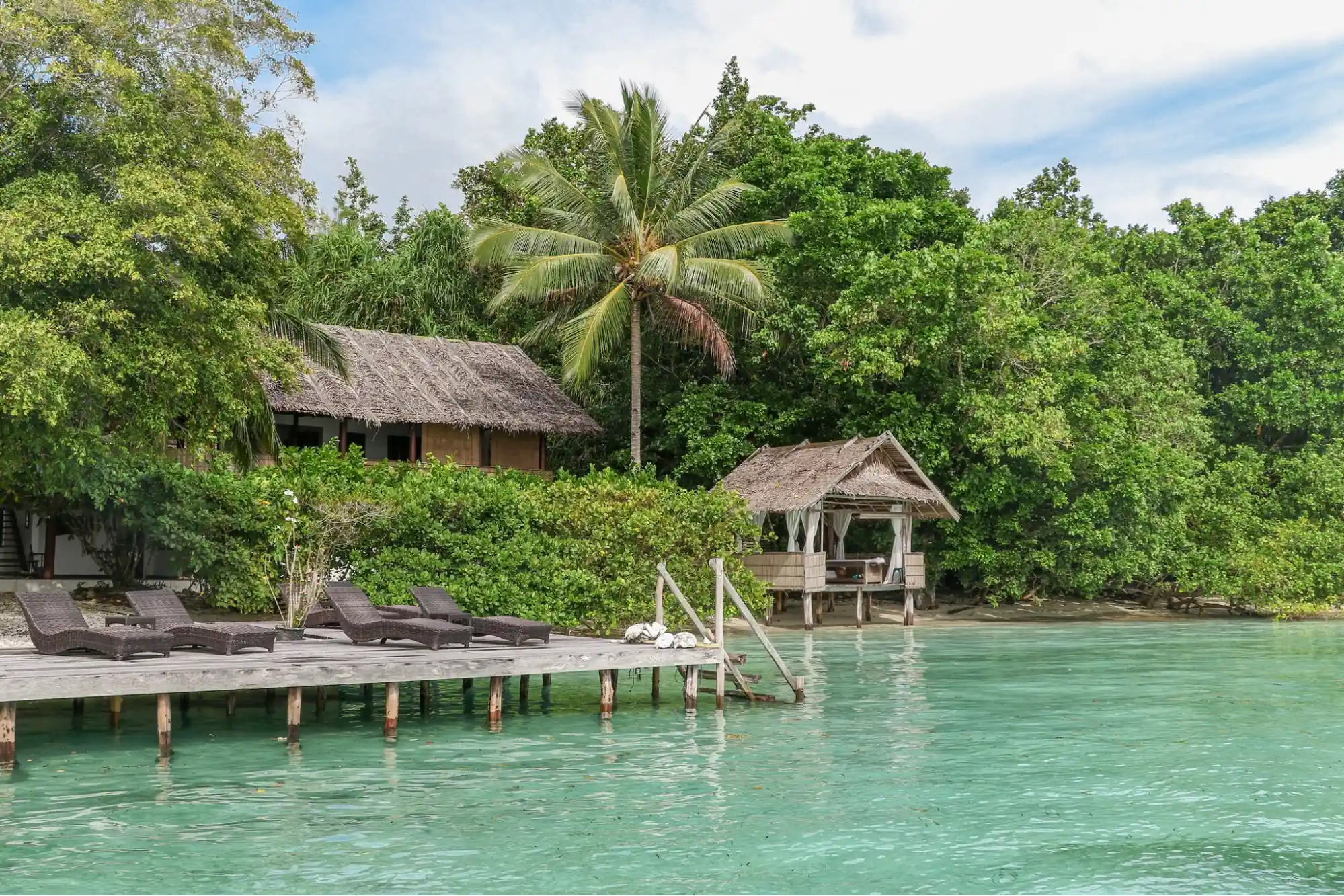
Sustainability in Tourism: Lessons from 30 Years in Papua
- May 5, 2025

In a world of fast solutions and fleeting trends, Papua Diving Resorts has spent three decades proving that real sustainability takes time—and roots.
The story of sustainable tourism in Papua doesn’t begin with buzzwords or green certifications. It begins with a single boat, a Dutch explorer, and a remote chain of islands that would eventually be known as Raja Ampat.
When Max Ammer first arrived in the 1990s, tourism barely existed in this region. What he saw wasn’t an opportunity to profit—it was a calling to protect.
That vision laid the groundwork for what is now Papua Diving Resorts, a leader in regenerative travel, conservation, and community empowerment in one of the world’s most biodiverse marine ecosystems.
Read more: Kri Island, Raja Ampat–A Complete Guide for Travelers
The early years were anything but easy. There was no infrastructure, no blueprint for building an eco-resort in the heart of the Coral Triangle.
What Max and his team did have was patience and a firm belief that sustainability must start with trust and respect for the local Papuan communities.
From the start, Papua Diving Resorts rejected the mass-tourism model. Instead, the focus was on small-scale development, using locally sourced materials, minimizing environmental impact, and learning from the people who had lived in harmony with these islands for generations.

Sustainability at Papua Diving Resorts has never been about doing less harm—it’s about doing more good.
Over time, the resorts evolved from eco-lodges into hubs for restoration and education. A cornerstone of this vision is the Raja Ampat Research and Conservation Centre (RARCC), an independent non-profit founded in close partnership with Papua Diving Resorts by Max Ammer.
RARCC’s mission goes beyond protecting reefs—it aims to empower the people of Raja Ampat to lead their own conservation future.
From coral restoration and mooring buoy programs to conservation science and youth education, it’s a holistic model where tourism funds action and data informs sustainability.
As RARCC celebrates its 10-year anniversary in 2025, its message is clear: sustainability must be systemic, local, and long-term.
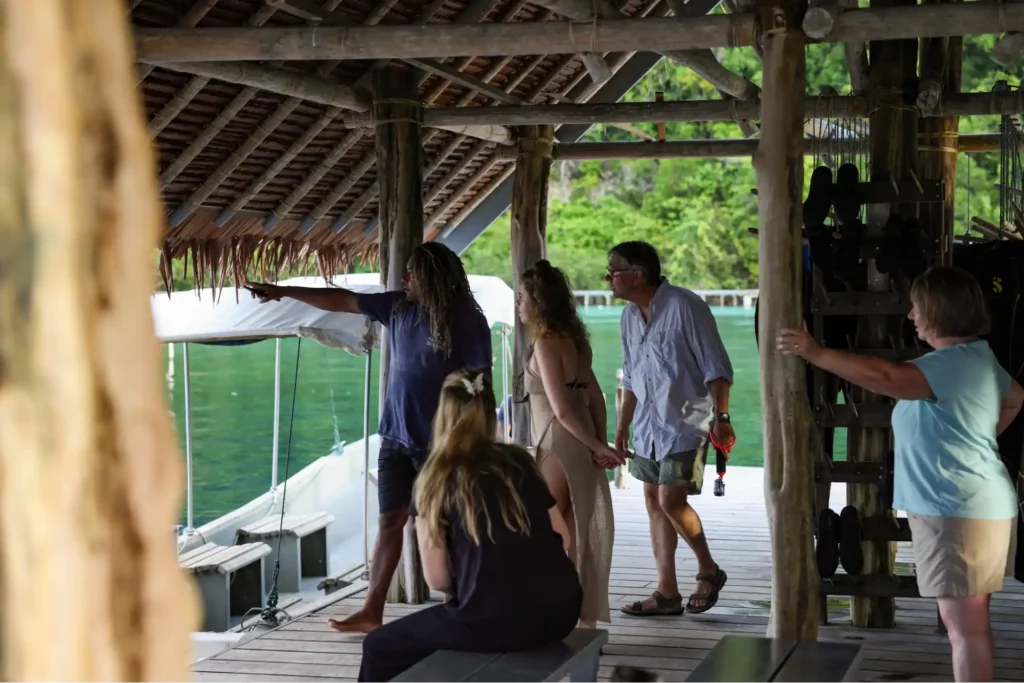
Source: @fabian_gysel
At the heart of everything Papua Diving Resorts does is a commitment to local empowerment. From the beginning, Max insisted on hiring and training Papuan staff—not as a gesture of inclusion, but as a foundation for the resort’s future.
Many of today’s senior dive guides, boat captains, engineers, and workshop mentors began with little to no formal education or experience. Through ongoing training, mentorship, and real-world support, they have grown into confident leaders—many of whom now mentor the next generation of marine stewards and conservationists.
One of Papua Diving Resorts’ most impactful initiatives is its diver education program, which equips local Papuans with the knowledge, skills, and resources needed to become internationally recognized PADI-certified dive guides. By removing financial and access barriers, the resort helps create long-term careers in diving, ensuring that the guardians of Raja Ampat’s marine biodiversity are also the people who call this place home.
The approach extends beyond the ocean. In the jungles of Kri Island, legendary birding guide Pak Niko—a local partner for over 30 years—continues to lead guests in search of the rare Wilson’s and Red Birds of Paradise. His deep knowledge of the forest and cultural storytelling has preserved traditional practices while enhancing guest experiences.
In Raja Ampat, sustainability without local leadership is just a slogan. But with genuine community investment, it becomes a movement—one rooted in pride, purpose, and long-term protection of both nature and culture.
Read more: Papua Diving Resorts’ Commitment Through Local Partnership

Operating in remote Papua comes with challenges—logistics, power, food, waste. But these obstacles became the mother of innovation at Papua Diving Resorts:
These solutions weren’t imported from abroad. They were born out of necessity, trial, error, and a refusal to compromise on ethics.
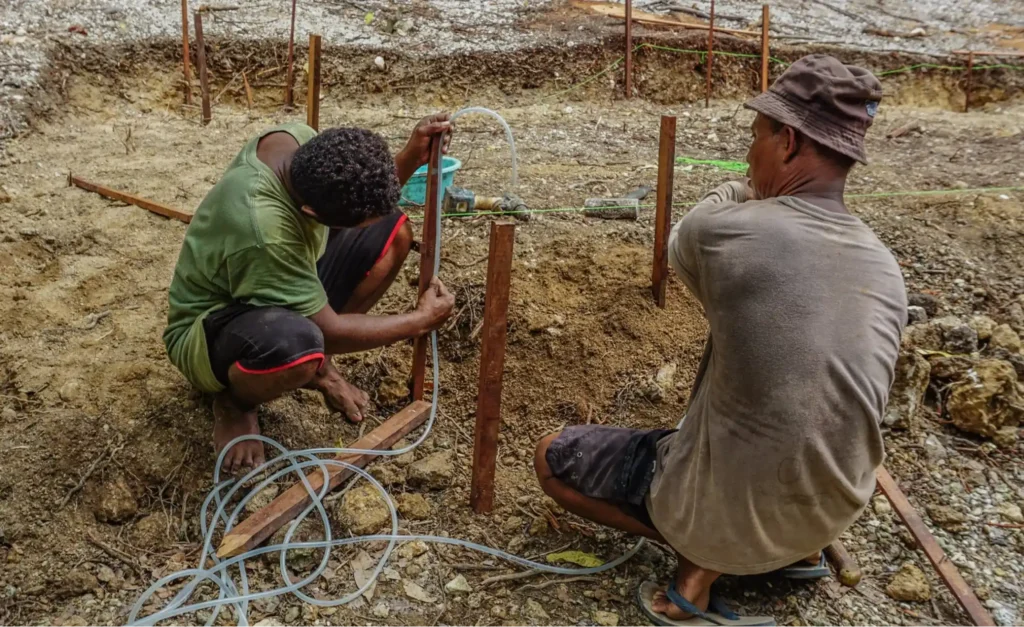
Lius, dive guide, working together with Sistono.
While “eco-tourism” is often used as a marketing strategy, Papua Diving Resorts believes real sustainability is uncomfortable, expensive, and slow. It requires letting go of short-term profit for long-term integrity.
Too often, greenwashing replaces actual change. Resorts build infinity pools and call them “eco” because they don’t use straws. But that’s not sustainability. That’s convenience.
At Papua Diving Resorts, the mission is deeper: to restore what has been damaged, empower those who live closest to the reef, and ensure that tourism becomes a force for healing, not harm.
Read more: Protecting Our Pristine Waters and Reefs – Fish Net Removal
The rewards of doing things the hard way are tangible:
As Raja Ampat begins to experience the effects of climate change and coral bleaching, regenerative tourism is more vital than ever.
It funds conservation science, creates jobs that don’t rely on extractive practices, and invites every guest to become part of the solution.
Read more: Celebrating World Oceans Day in Raja Ampat with Papua Diving
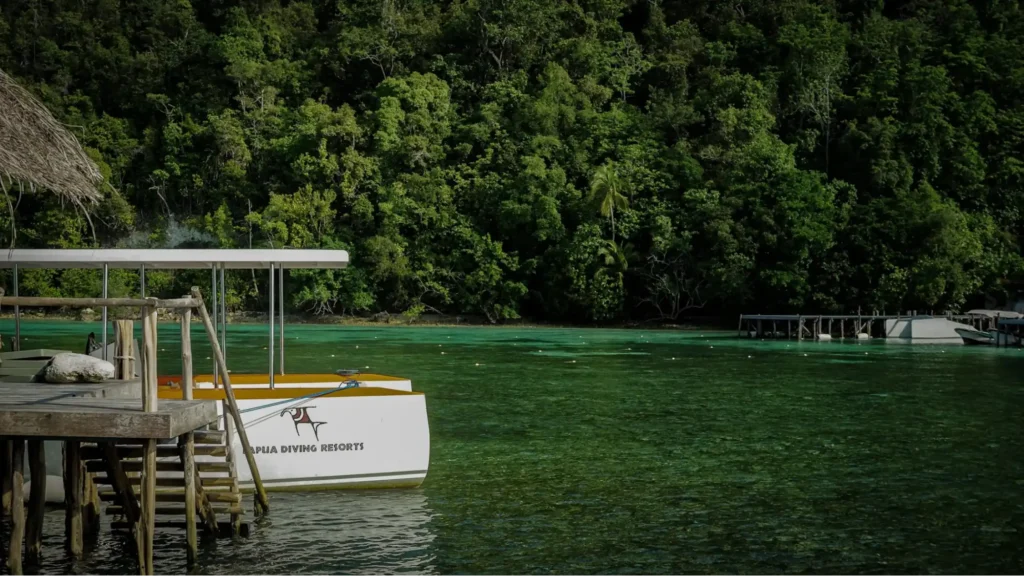
As Papua Diving Resorts looks toward the future, one thing remains unchanged: Max Ammer’s unwavering commitment to conservation and community. Max Ammer continues to play an active role—overseeing the design of more sustainable bungalows, the construction of fuel-efficient boats, and the long-term direction of RARCC’s conservation projects, especially its growing agroforestry program.
A key focus right now is the “Stewards for Nature” agroforestry project, which aims to plant one million trees while providing sustainable crops for the resorts and surrounding communities. Early harvests—like cacao beans—are already underway, with future plans to produce coffee, honey, and chocolate. (Follow the project’s progress on Instagram @rarcc.agroforestry.)
This marks a continuation of their effort of support and guidance towards the locals, helping the next generation of Papuan leaders grow into roles that drive conservation, education, and sustainable tourism. It’s not a handover—it’s a deepening of the resort’s 30-year commitment to community empowerment.
Most importantly, they’re working to provide local communities with the tools, alternatives, and autonomy to thrive. It’s not about telling Papuans what they can’t do—it’s about showing them what they can do.
Without the beauty of Raja Ampat, there is no eco-tourism—and without strong communities, there is no future for conservation.
Read more: Papua Diving Resort’s Award-Winning Commitment to Sustainable Tourism in Raja Ampat
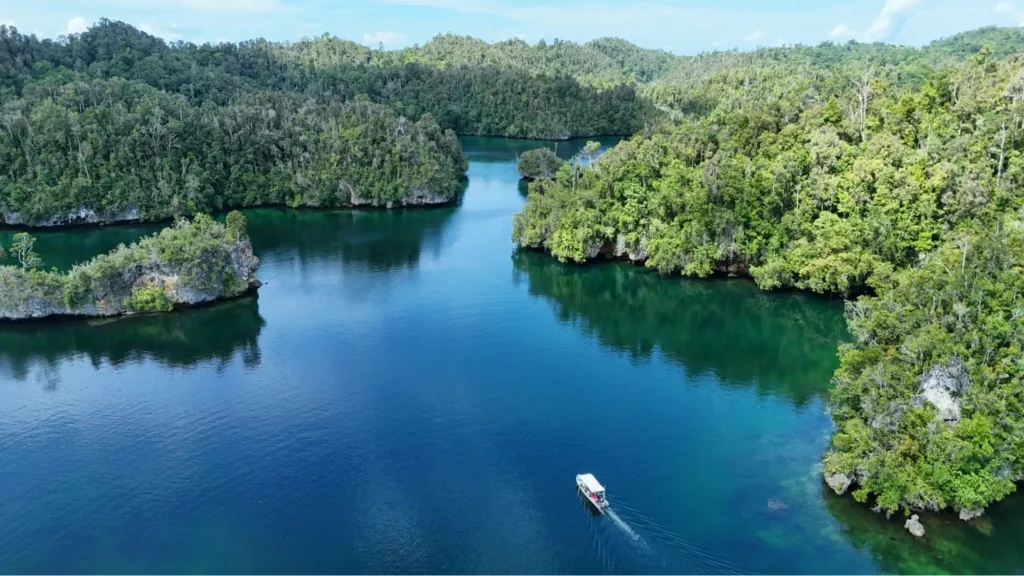
Source: @thejetlagged
In Raja Ampat, the reefs are still alive. The community is rising. And Papua Diving Resorts is just getting started.
If you're seeking more than just a holiday—if you want to dive into a living, breathing example of how tourism can uplift both people and planet—this is the place.
Join us in shaping the next 30 years of sustainable tourism in Papua. Stay at Kri Eco Resort, learn from local guides, or explore conservation through the SEACAM Center.

